Journey to Japan: What to See, Do, Drink and Eat Beyond Tokyo

The Kumano Kodo pilgrimage, Kii Mountains, Japan. Photo: Courtesy of Japan National Tourism Organization
Japan finally fully reopened to international travellers last fall after more than two years of pandemic-era closure, bringing Canadians closer to realizing their dreams of visiting this fascinating country.
Since you’ll probably start your trip with a few days in Tokyo, here are some ideas on how to get around, where to see, do and eat beyond Japan’s exciting capital.
Getting Around
National rail network Japan Railways makes it easy to explore most of the country by clean, punctual trains, including with a Japan Rail Pass.
Best advice: pack light. I was glad I travelled with a carry-on for my recent trip. Elevators to second-level departure platforms are often packed, so you’ll need to be able to get yourself and your bag on and off escalators. There’s no large luggage storage in the railcars, only overhead racks. You can muscle a bigger suitcase into one of them, or book one of the national luggage delivery services to take big suitcases to your destination. Some have same-day service.
Another way to make travel low stress is to book accommodations inside or attached to a train station. Large stations like Kyoto are like mini-cities, with plenty of restaurants and shopping, including locally made goods. I stayed at the station-adjacent Hotel Nikko Nara in the historic city of Nara, the 8th-century capital of Japan and home of Tōdai-ji Temple, the largest wooden building in the world. Sacred sitka deer crowd visitors along the approach to the Buddhist temple complex, demanding more of the special deer cookie treats sold by vendors.
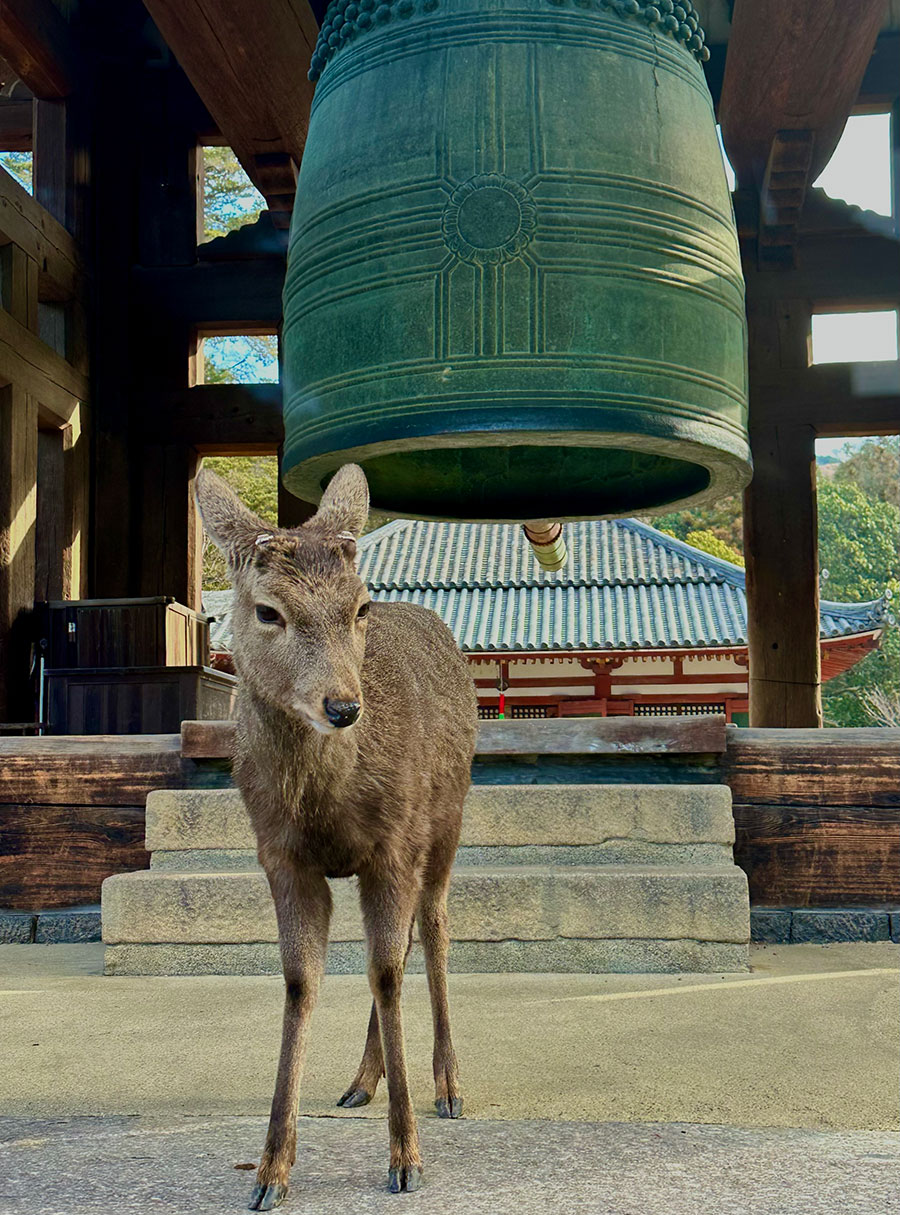
Take a Bath
Want to literally immerse yourself in Japanese culture? Start with an ultra-relaxing communal mineral hot springs bath called an onsen.
My first stop outside Tokyo was the town of Yamashiro Onsen in the Japanese Alps foothills for an overnight stay at Rurikoh, a traditional-style Japanese ryokan inn. Yamashiro is about five hours by train from Tokyo and is one of four historic hot springs resort towns in the Kaga Onsen region.
Our guide Yuko Ehara told us the 8th-century legend of a monk who helped a mythical injured crow. Not only did the bird have three legs, but when the monk stopped to help it he also noticed the water in the spring beside it was warm. Since then, people have been coming here to soak in the hot mineral-rich waters, which are said to ease everything from arthritis to skin conditions.
I can’t vouch for that, except to say the experience is blissful. I sunk into the 40 C mineral water of an outdoor pool at Rurikoh’s onsen (there’s also a larger bath indoors) and watched snow falling on artfully pruned trees in the garden beyond. The hotel even has an outdoor foot spa bath with a pebble bottom to soothe aching feet. After my bath, I was so relaxed it was an effort to dress in a thick cotton kimono and light jacket, called a yukata, provided by the hotel to wear to a multi-course kaiseki dinner (more on that below) in a private dining room.
That night, I opted to sleep in a bed. But a few days later, at the 575-room Hotel Urashima Resort & Spa in the town of Nachi Katsuura Onsen on the Pacific Ocean, attendants came to my room before dinner and made up a plush sleeping futon on the tatami mat floor of the living area. It was a surprisingly restful sleep, no doubt helped by a soak in the hotel’s ocean-view cave onsens.
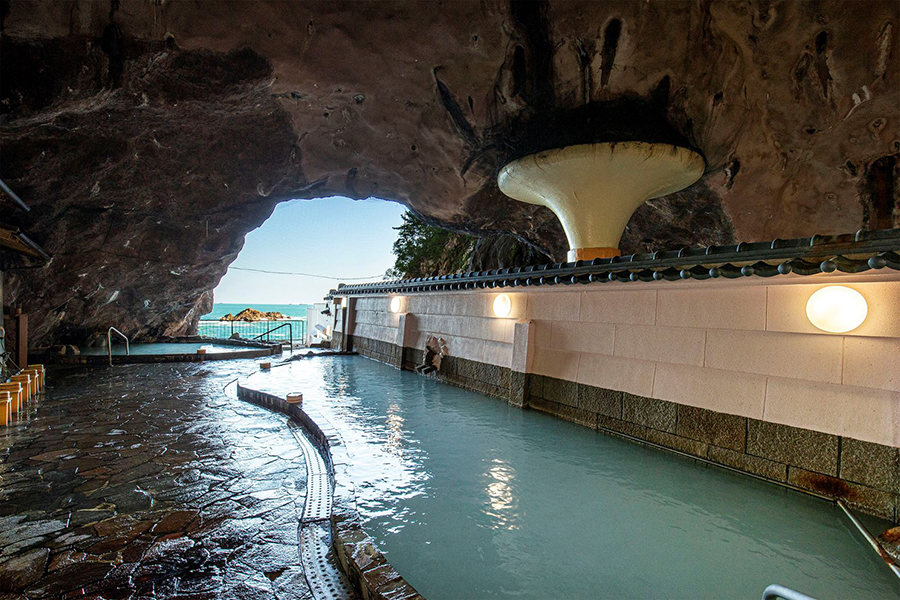
How to Use an Onsen
Onsens are fed by underground springs. Public baths in Japan use heated tap water. Both have the same bathing rules, including washing your body well with soap before you soak and another about tattoos. Because of their association with organized crime, you may have to cover your ink with bandages. Or book a private onsen.
Step 1, Get Naked
Communal baths are separated into areas for women and men. Curtains at the entrance show which side to enter: red for women, blue for men. Pictogram charts in the dressing room explain how to use the baths. There’s a long row of stations with handheld showers, small buckets and low stools beside the main bath. Body wash, shampoo and conditioner are provided.
If you feel uncomfortable walking around naked in the company of strangers, it will melt away once you slide into the blissfully hot water.
Where Delicious Food Meets Beauty
A kaiseki dinner is a series of seasonal, local dishes akin to a chef’s multi-course tasting meal. Simple, elegant presentation and the best of local, seasonal foods are key. A kaiseki dinner is often included in an onsen hotel stay. The kaiseki at Rurikoh was a series of beautifully presented courses paired with locally brewed sake, served cold from small glass flasks.
The meal included a selection of delicate appetizers including pickled radish, carrot and ginger cut into floral shapes. A porcelain dish shaped like a lemon held house-made tofu topped with shaved radish made to mimic a mound of snow and topped with red salmon roe. There were thin slices of tender wagyu beef to quickly cook in an individual earthenware bowl of hot broth with vegetables, called shabu shabu. Local seabream was the star of the sashimi. Other courses included soup, braised fish and queen crab rice.
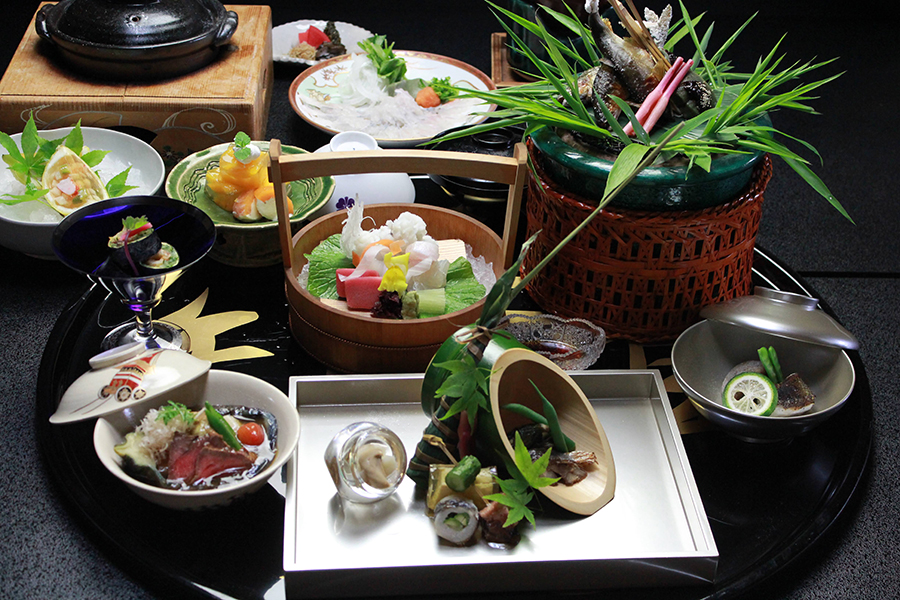
Eat Local
Every city in Japan has its specialty dishes and street food capital Osaka is among the best places to experience the Japanese passion for fresh and local food. I saw it in action during a lunchtime visit to the Kuromon Ichiba covered market. Dubbed Osaka’s Kitchen, stalls and small shops were busy with shoppers and hungry customers ordering fresh seafood, skewers and meats cooked on the spot. Fish vendors sliced exceptional bigeye tuna for sashimi, sushi and donburi rice bowls. One stall was selling poisonous pufferfish, called fugu, either whole or thinly sliced. I passed.
You’ve probably heard of well-marbled Japanese wagyu brands like Kobe beef, which tastes sublime and has a price tag — upwards of $30 for 100 grams at the market — that may temporarily ruin your appetite. But go for it. You won’t regret it, especially meltingly tender, super-beefy Matsusaka beef.
I bought a three-piece skewer of deliciously fatty wagyu beef hot off a grill for $15, a great deal. Usually, I’d walk as I enjoyed my snack, but that’s something that’s frowned on by Japanese because it means you’re not fully appreciating the food. I sat at a table across from the food stall and savoured every bite.
Osaka is the birthplace of famous street foods including takoyaki – Timbit-sized rounds studded with chopped octopus and cooked in a special iron pan. I loved kushikatsu, battered skewers of meat, fish and veggies deep-fried in beef tallow and served with dipping sauces. Yukari restaurant has been serving thick, savory cabbage pancakes, called okonomiyaki, in Kuromon Ichiba since 1953. You can cook your okonomiyaki and customize it with sauces on a flat-top grill in the middle of your table, then cut it into serving chunks with a flat metal spatula. You’ll know you’re at an okonomiyaki restaurant by the image of the serving tool on the sign outside.
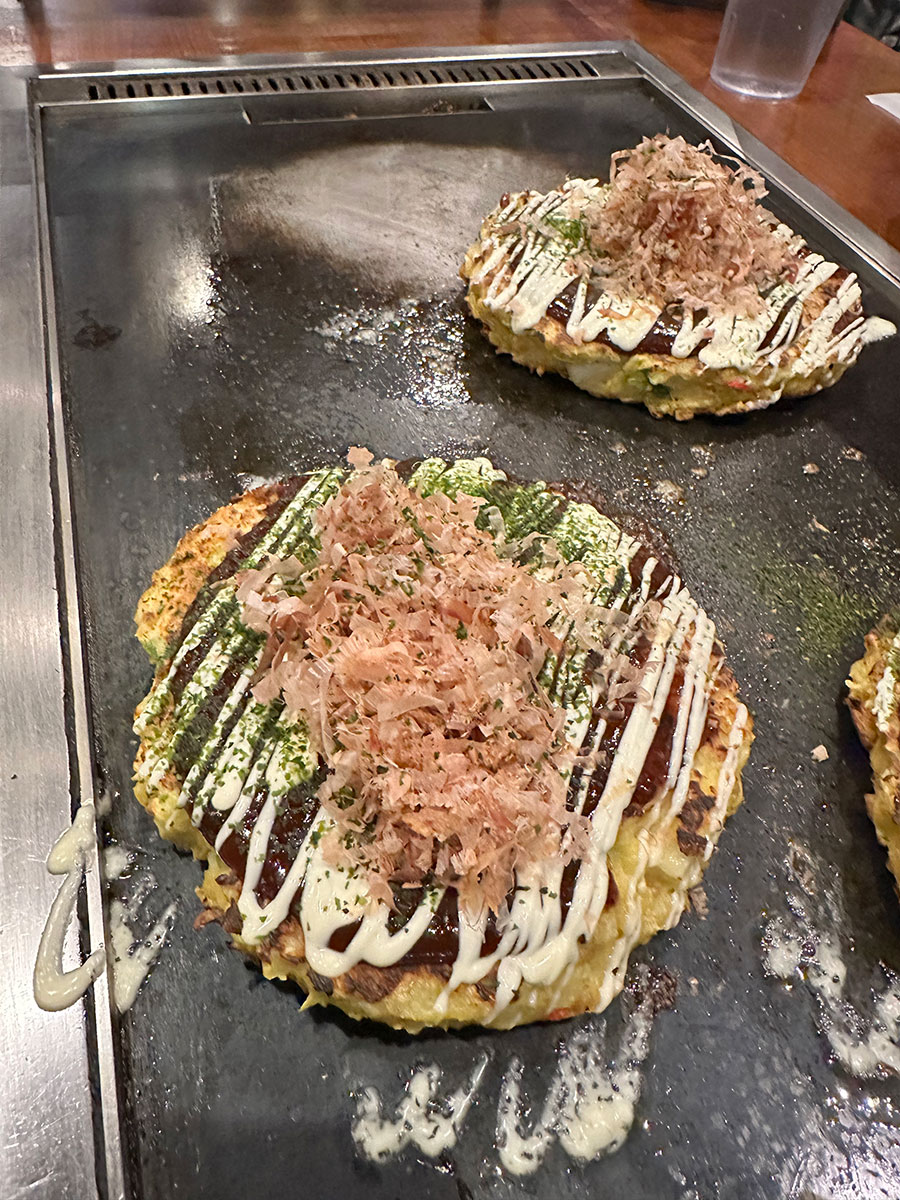
Sweet Treats
The Japanese love pastry and bakeries. Ehara told us French-style boulangeries and pâtisseries outnumber convenience stores in Japan. The presentation is delightful, with high-end bakeries selling gorgeous little cakes and fancies that are intricately boxed and presented to purchasers with a bow. You can also pick up a pretty delicious pastry in a 7-Eleven. The chain, located all over Japan, including in train stations, sells surprisingly good-quality cream puffs. Want a hot coffee with it? Grab a can from a shelf with a red lining for a steaming latte to go. Or buy one from a vending machine. Cold shelves indicate chilled drinks
Meditate at a Zen Monastery
I took part in a Zazen meditation guided by a young monk at Soto Zen Eihei-ji Temple — the temple of eternal peace — a mountain monastery complex surrounded by cedars and founded in the 13th century.
My mindfulness needed work. The black-robed monk helped yank my wandering mind back to my practice with a sharp rap of a flat stick on my shoulder. It’s okay; I asked for it by placing my palms together and bowing. For about $10, visitors can have a tour of part of the main temple complex and do a seated meditation. For $100, you can stay two nights in a simple room, which includes two vegetarian meals daily. Live the same kind of life as the monks for a short time, reflecting, meditating and cleaning the monastery.
“To polish the floor means to polish your heart,” explained our guide Ehara, who has stayed at Eihei-ji Temple and hoped to do it again.
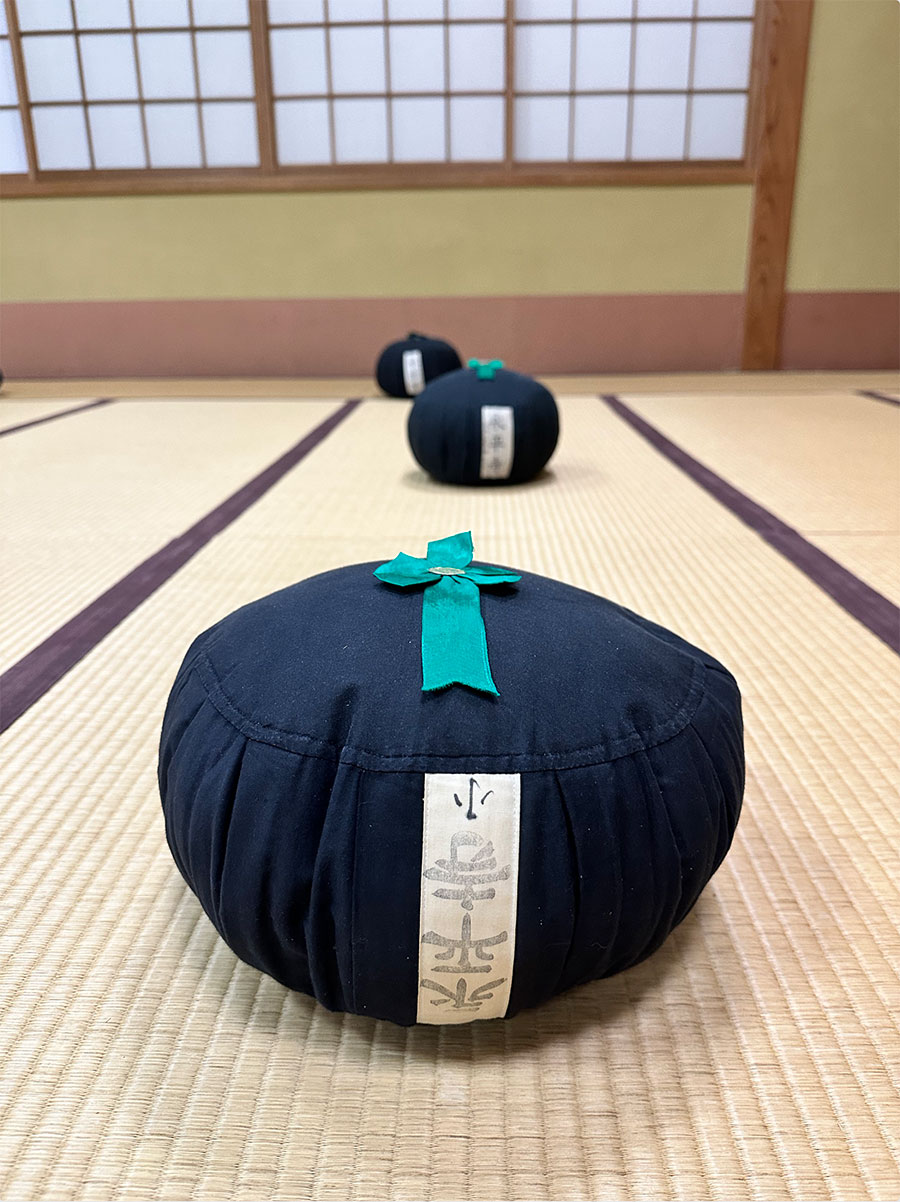
Walk a Pilgrim Route
Even walking a short section of the 87-kilometre Kumano Kodo pilgrimage route in the Kii Mountains outside the coastal town of Nachikatsuura felt like a dream. The UNESCO World Heritage Site is breathtaking and peaceful, a place to reflect as we climbed stone stairs worn smooth by others who had walked this path for more than a thousand years. The route through moss-covered forest is lined by cedar trees with massive trunks. Some are said to be 900 years old.
Near the top, we stopped to bow at a vermillion torii gate, the traditional entrance to a Shinto shrine. Up more sets of steps and a sharp turn and up more stairs and we entered Kumano Nachi Taisha Grand Shrine, a complex of brilliant red-orange buildings of varying sizes, each of which houses a spirit or kami.
Beyond is the pagoda-style Seiganto-ji Buddhist temple, with 133-metre-tall Nachi Falls, the country’s tallest waterfall, in the background. That image of classic Japan is one of my most treasured memories of my time there, and one that makes me anxious to return.
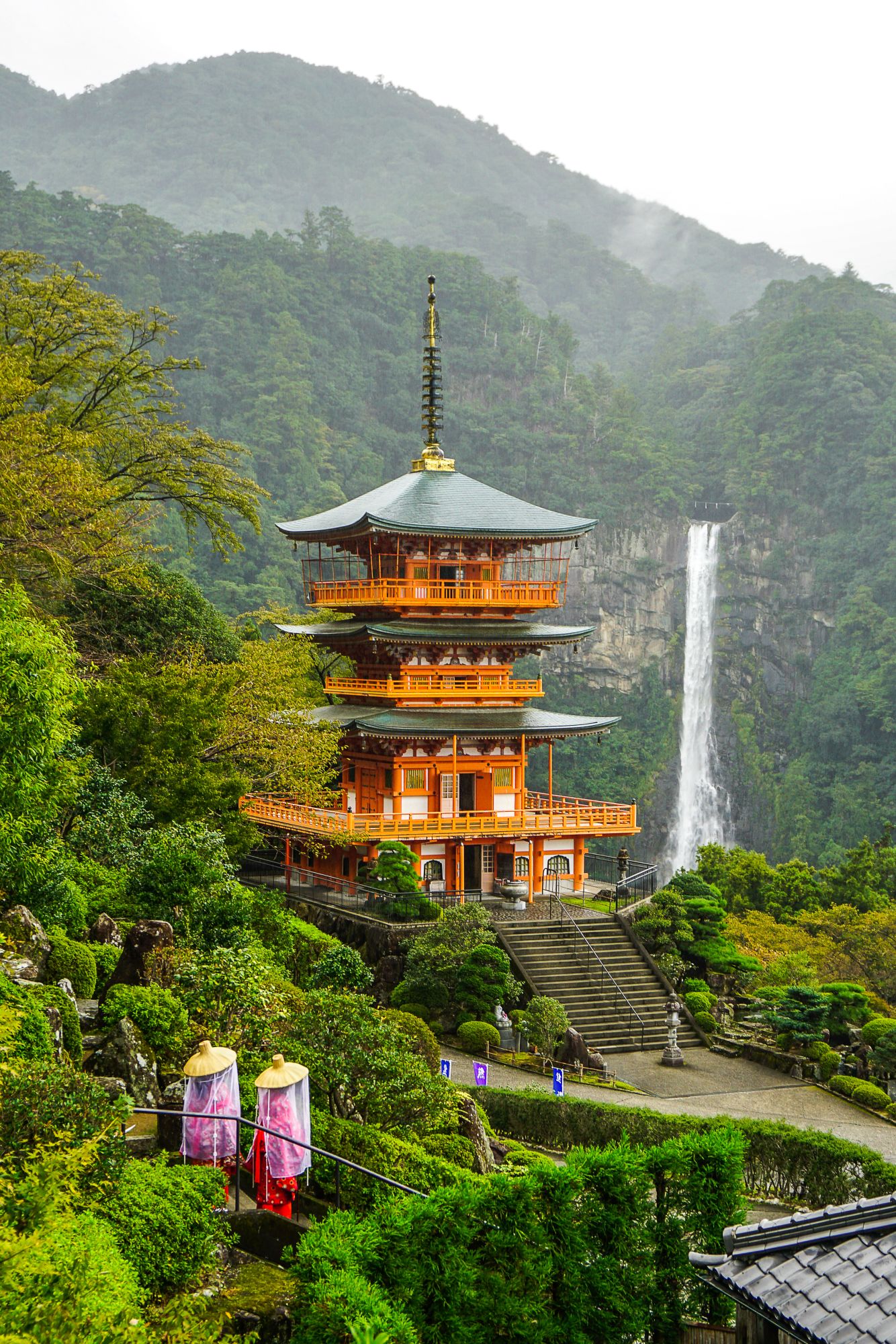
For more information, visit Japan National Tourism Organization.
* A version of this story was originally published in April 2023.
RELATED: